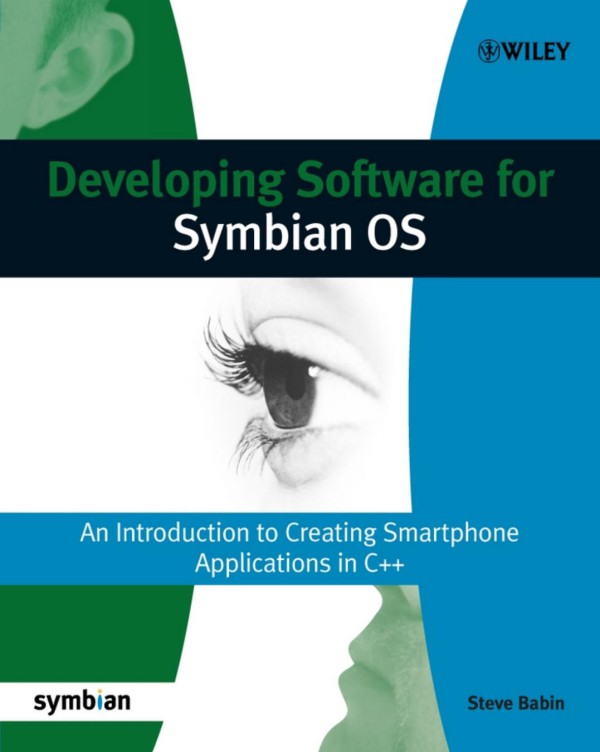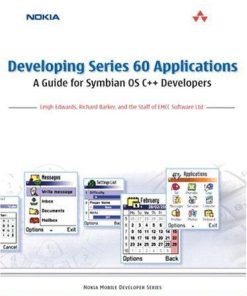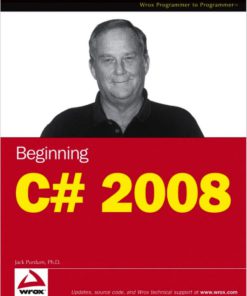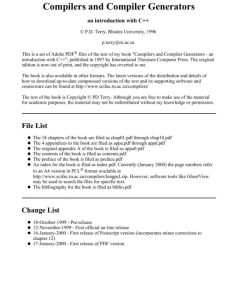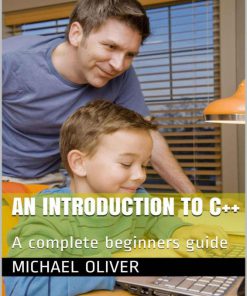Developing Software for Symbian OS An Introduction to c in C++ 1st edition by Steve Babin ISBN 0470018453 978-0470018453
$50.00 Original price was: $50.00.$25.00Current price is: $25.00.
Authors:Babin, Steve.; Harrison, Richard. , Tags:TEAM DDU , Author sort:Babin, Steve.; Harrison, Richard. , Languages:Languages:eng , Published:Published:Jan 2006 , Comments:Comments:Team DDU
Developing Software for Symbian OS An Introduction to c in C++ 1st edition by Steve Babin- Ebook PDF Instant Download/Delivery. 0470018453,978-0470018453
Full download Developing Software for Symbian OS An Introduction to c in C++ 1st Edition after payment
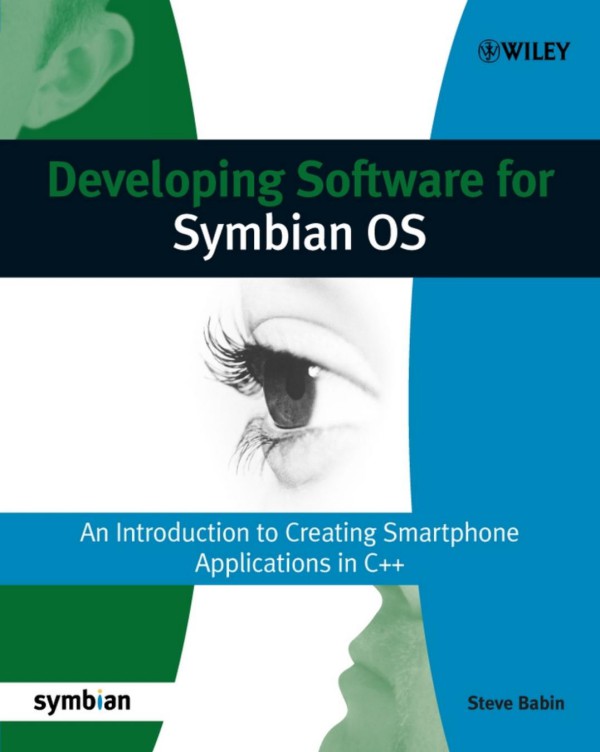
Product details:
ISBN 10: 0470018453
ISBN 13: 978-0470018453
Author:Steve Babin
The overall goal of this book is to provide introductory coverage of Symbian OS and get developers who have little or no knowledge of Symbian OS developing as quickly as possible.
- A clear and concise text on how Symbian OS architecture works and the core programming techniques and concepts needed to be a solid, competent Symbian programmer
- Shows how Symbian OS architecture and programming compares with other mobile operating systems (to help transition and for better understanding)
- Provides multiple examples and extra descriptions for areas most difficult for new programmers who are unfamiliar to the unique OS architecture
- Contains many tips and techniques documented only, up until now, by scattered white papers and newsgroup threads
- Describes many details of inner operations of Symbian OS, focusing specifically on those needed to become a competent programmer
The book will cover development ranging from low-level system programming to end user GUI applications. It also covers the development and packaging tools, as well as providing some detailed reference and examples for key APIs.
Table of content:
1. Smartphones and Symbian OS.
1.1 Notes on this New Edition.
1.2 Smartphone Concepts.
1.3 Smartphone Features.
1.4 The Mobile OS.
1.5 Symbian OS – A Little History.
1.6 Symbian OS Smartphones.
1.7 Other Smartphone Operating Systems.
2. Symbian OS Quick Start.
2.1 What Do You Need to Get Started?
2.2 Firing Up the Development Tools.
2.3 Simple Example Application.
2.4 Building and Executing on the Emulator.
2.5 A Carbide.c++ Project.
2.6 Building for the Smartphone.
3. Symbian OS Architecture.
3.1 Components in Symbian OS.
3.2 Multitasking in Symbian OS.
3.3 Shared Code: Libraries, DLLs, and Frameworks.
3.4 Client-Server Model.
3.5 Memory in Symbian OS.
3.6 The Kernel.
3.7 Active Objects and Asynchronous Functions.
3.8 GUI Architecture.
3.9 High-Performance Graphics.
3.10 The Communication Architecture.
3.11 Application Engines and Services.
3.12 Platform Security.
4. Symbian OS Programming Basics.
4.1 Use of C++ in Symbian OS.
4.2 Non-standard C++ Characteristics.
4.3 Basic Data Types.
4.4 Symbian OS Classes.
4.5 Exception Error Handling and Cleanup.
4.6 Libraries.
4.7 Executable Files.
4.8 Naming Conventions.
4.9 Summary.
5. Symbian OS Build Environment.
5.1 SDK Directory Structure.
5.2 Build System Overview.
5.3 Basic Build Flow.
5.4 Build Targets.
5.5 What is a UID?
5.6 The Emulator.
5.7 Building Shared Libraries.
5.8 DLL Interface Freezing.
5.9 Installing Applications on the Smartphone.
6. Strings, Buffers, and Data Collections.
6.1 Introducing the Text Console.
6.2 Descriptors for Strings and Binary Data.
6.3 The Descriptor Classes.
6.4 Descriptor Methods.
6.5 Converting Between 8-Bit and 16-Bit Descriptors.
6.6 Dynamic Buffers.
6.7 Templates in Symbian OS.
6.8 Arrays.
6.9 Other Data Collection Classes.
7. Platform Security and Symbian Signed.
7.1 What is Platform Security?
7.2 What Platform Security is Not.
7.3 What this Means to a Developer.
7.4 Capabilities for API Security.
7.5 Application Signing in Symbian.
7.6 Getting Your Application Symbian Signed.
7.7 Developer Certificates.
8. Asynchronous Functions and Active Objects.
8.1 Asynchronous Functions.
8.2 Introducing Active Objects.
8.3 The Active Scheduler.
8.4 Active Scheduler Error Handling.
8.5 Active Object Priorities.
8.6 Canceling Outstanding Requests.
8.7 Removing an Active Object.
8.8 Active Object Example.
8.9 Active Object Issues.
8.10 Using Active Objects for background Tasks.
9. Processes, Threads, and Synchronization.
9.1 Processes.
9.2 Using Threads on Symbian OS.
9.3 Sharing Memory Between Processes.
9.4 Memory Chunks.
9.5 Thread Synchronization.
10. Client-Server Framework.
10.1 Client-Server Overview.
10.2 A Look at the Client-Server Classes.
10.3 Client-Server Example.
11. Symbian OS TCP/IP Network Programming.
11.1 Introduction to TCP/IP.
11.2 Network Programming Using Sockets.
11.3 Symbian OS Socket API.
11.4 Example: Retrieving Weather Information.
11.5 Making a Network Connection.
12. GUI Application Programming.
12.1 Symbian OS User Interfaces.
12.2 Anatomy of a GUI Application.
12.3 Application Classes.
12.4 Resource Files.
12.5 Dialogs.
12.6 Symbian OS Controls.
12.7 View Architecture.
12.8 Application Icon and Caption.
People also search:
symbian os developer
symbian os operating system
symbian os source code
symbian app development
symbian programming

